An artificial eye or eye prosthesis is a device that is placed inside the eye socket following the loss of an eye. It improves the appearance of the damaged eye. When the entire eye is removed, the eye prosthesis fills the empty space, preventing issues like drooping eyelids.
Unfortunately, with current knowledge and technology, an artificial eye capable of sight cannot be created. After the natural eye is removed and an artificial eye is fitted, the patient won’t have vision with that eye. However, luckily, the eye is among the paired body parts, so in the absence of one eye, the other eye fully provides the person’s sense of vision without bearing additional pressure. For this reason, individuals using an eye prosthesis do not face any vision-related issues.
The artificial eye is placed on an intraocular implant. This implant, a spherical device, is permanently inserted into the eye socket through surgery and is connected to the four eye muscles. The movement of these muscles triggers the movement of the implant, causing the prosthetic eye to move.
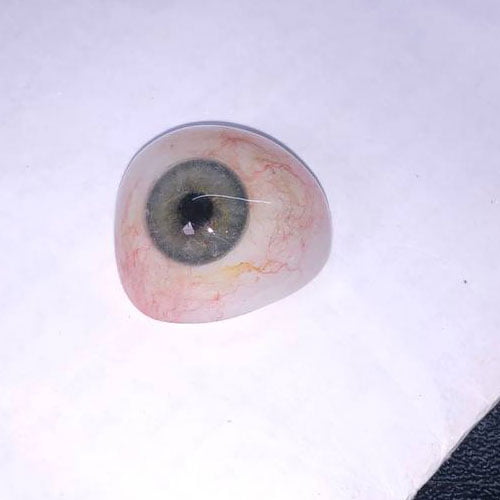
Types of Artificial Eyes:
Artificial eyes are created through two methods. One for removed eyes and another for eyes that have become smaller due to blindness or injury. The surgical procedure for eye removal is performed by an ophthalmologist.
Materials Used in Eye Prostheses:
Materials used in eye prostheses typically include acrylic and glass. Due to their fragility and the inability for molding, glass prostheses are rarely used today. Glass prostheses are rarely used today due to their fragility and the inability to be molded. In contrast to glass artificial eyes, acrylic prostheses are unbreakable and are crafted by molding them to the patient’s eye socket. If the eyelids don’t have any specific abnormalities and the eye socket is in good condition, the eye prosthesis will be completely indistinguishable.
It’s essential that the construction of an eye prosthesis is carried out by a specialist in reputable centers. Given the sensitivity of the matter, before visiting centers specializing in artificial eyes, it’s crucial to research them thoroughly and ensure the credibility of the chosen center.
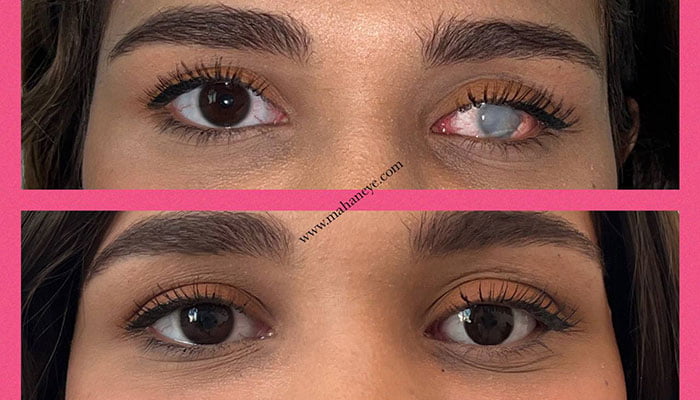
Do Eye Prostheses Require Replacement?
An artificial eye is not permanent and based on the materials used in its construction, it should be replaced at specific times. The timing for replacing the artificial eye is determined by the ocularist or the eye surgeon.
Signs indicating the need for artificial eye replacement include:
- Increased eye discharge
- Dryness or discomfort
- Recurring infections
- Change in color
- Inflammation of the ocular tissues
- Change in the size of the eye
If you notice any of these signs, consider replacing your artificial eye.
Generally, the useful lifespan of an artificial eye is around 5 to 7 years. After this time, considering the condition of the prosthesis, it should be replaced. Additionally, as eye prostheses can develop fine lines and may lose its smooth movement, it’s advisable for patients to visit an ocularist at least once a year to address these issues.
How an Eye Prosthesis Is Made:
Following eye removal surgery, it takes about 6 to 8 weeks for the swelling and inflammation in the area to subside, allowing for the measurement of the eye socket by the eye specialist. After this measurement is done, the molding process is carried out by the ocularist. Typically, coloring of the white area of the eye, the iris, and the pupil is done manually. This process results in an artificial eye with more detailed features, creating a more natural appearance and a closer resemblance to the person’s real eye. When the process of creating the artificial eye is executed properly, it is usually indistinguishable from a healthy eye.
It’s important to note that these prostheses, similar to a real eye to some extent, have the ability to move in different directions. In cases where a full removal surgery of the eye is conducted, this movement is facilitated by linking the eye muscles to the eye implant. However, the movement of artificial eyes will not entirely match that of a healthy eye; in the best-case scenario, it covers approximately 70% of a healthy eye’s movement. Yet, if the patient controls their eye movements, others will not notice their use of a prosthesis, thereby boosting their confidence in social settings.
It’s also worth mentioning that artificial eyes are not sensitive to ambient light, and the pupil area doesn’t react to light variations. It doesn’t change with different light intensities. Essentially, a proportional painting to match a healthy person’s eye is applied to the acrylic mold in a standard state.
Components of an Eye Prosthesis
An eye prosthesis consists of two main parts, each explained below:
- The outer shell, which has an oval shape and essentially forms the white part of the eye.
- The colored section or the central part of the prosthesis that replaces the iris and pupil of the eye.
Because the design and coloring of the central area require meticulous precision, this task should be handled by skilled and specialized individuals to achieve the desired outcome.
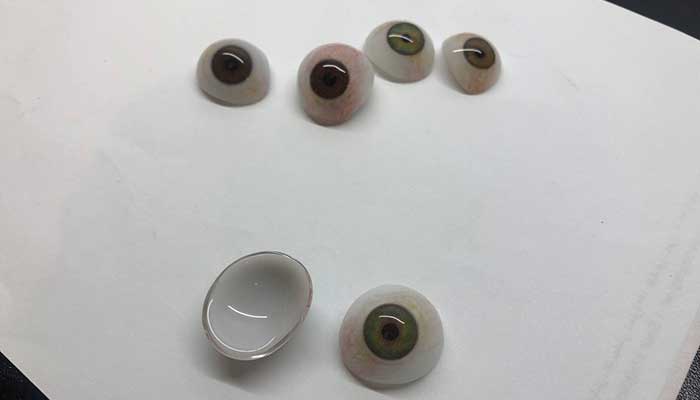
Mahan prosthetic eye clinic – Manufacturing Various Types of Eye Prostheses
It’s important to note that due to the painted nature of the iris and pupil section, this part of the prosthesis doesn’t alter in size like a real eye, and it’s designed to resemble a healthy eye, whether small or large.
It’s worth mentioning that using a prosthesis instead of a defective eye aids in the proper functioning of the eyelid, which can be considered one of the advantages of using an artificial eye.
Usually, due to potential issues that may arise over time, it’s essential to have the prosthesis polished by an ocularist at least once a year. Also, the useful lifespan of each prosthesis ranges from 5 to 7 years.
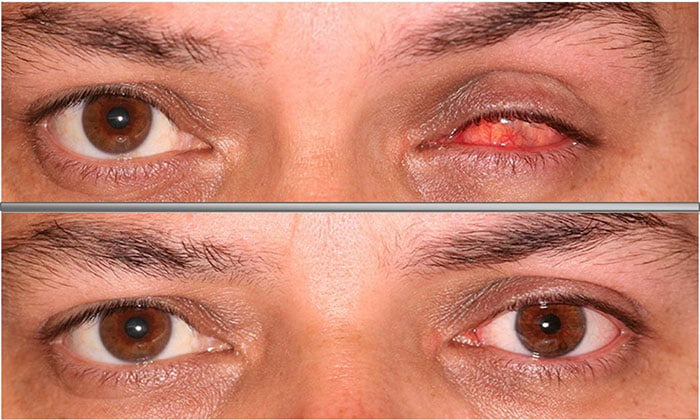
Important Tips for Maintaining Eye Prostheses and Prolonging Their Lifespan
Like any other devices, eye prostheses can also be prone to damage. However, by adhering to certain guidelines, it’s possible to prevent some of these damages to a certain extent and prolongtheir lifespan. Additionally, it’s worth mentioning that these prostheses should be replaced after 5 to 7 years. Below are some of these tips mentioned in the following article:
- Handle the prosthesis with clean hands.
- Place the prosthesis on a clean cloth when removing it.
- Strictly avoid cleaning the prosthesis with chemical disinfectants or alcohol to prevent damage.
- Sometimes, dust and other environmental elements can evaporate the moisture on the prosthesis’s surface, causing dryness. In such cases, using eye drops or lubricants is advisable.
- It’s recommended that the prosthesis undergo professional polishing at least once a year to regain its shine and preserve its natural appearance.
Polishing an Eye Prosthesis
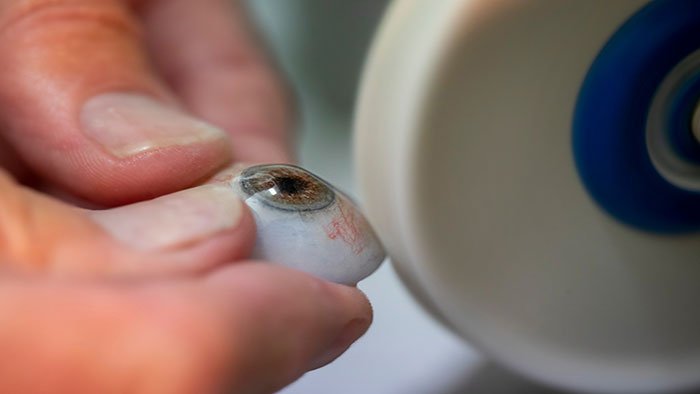
For a more natural appearance, it’s essential to have the prosthesis polished by a professional every 6 months to a year. This task should be performed by a skilled ocularist when there’s irritation, increased tear production, eye discomfort, or noticeable changes in the prosthesis’s appearance.
Polishing helps remove scratches and deposits on the prosthesis’s surface, restoring its shine and a more realistic appearance. It also facilitates smoother movement of the prosthesis, providing greater comfort for the user. It’s worth noting that the useful lifespan of eye prostheses ranges between 5 to 7 years, and it’s best to replace them after this period.
Influential Criteria in Choosing the Best Eye Prosthesis
Given the high sensitivity of the human eye area and its significant impact on visual beauty, selecting a suitable eye prosthesis is crucial for achieving the best possible outcome. People should meticulously undertake this task to ensure the best result.
Mahan prosthetic eye clinic – Manufacturing Various Types of Eye Prostheses
One of the most important criteria in choosing an eye prosthesis is its lightweight nature. In the past, artificial eyes would be made of glass that were heavy and exerted high pressure on the patient’s eye socket. It’s important to note that the lighter the prosthesis, the less pressure it puts on the person. Therefore, nowadays, transparent plastic prostheses are mostly used as they are significantly lighter compared to glass models.
Another criterion that should be considered is the natural appearance of the prosthesis. It should be difficult for others to distinguish it from the eye of a healthy person. Nowadays, medical-grade acrylic is used to craft eye prostheses for this purpose. Additionally, the role of an ocularist and their skill in making artificial eyes is undeniable in achieving a natural look.
Choosing the Best Eye Prosthesis Center
Because an eye prosthesis greatly impacts the beauty of a visually impaired person, extreme care must be taken in its construction. Therefore, choosing a well-equipped center for making eye prostheses, which utilizes skilled ocularists and ophthalmologist in this field, is of paramount importance.
Moreover, a reputable center must employ the latest global techniques and equipment for prosthesis creation. Additionally, hygiene at these centers is vital to prevent the transmission of infections through the prosthetic device.
Mahan Eye Prosthesis Clinic is recognized as the country’s first scientific center for manufacturing artificial eyes. The clinic utilizes state-of-the-art methods and equipment to create eye prostheses, ensuring a pleasant experience for the esteemed patients, allowing them to confidently integrate into society.
Does an artificial eye move? And what factors does it depend on?
The movement range of an artificial eye depends on the type of prosthesis chosen for the removed eye by the physician. The movement range of the prosthetic eye also varies depending on the selected implant. If an implant made with newer permeable materials is used, the tissues and blood vessels around the implant can grow.
For improved movement, during surgery, the physician needs to connect muscles and tendons of the eye to these permeable implants. This allows some motions to be transferred to the prosthetic, resulting in better movement. Also, by attaching a peg to the back of the prosthesis, the range of motion of the eye can be increased. This allows the tracking of object movements to be more aligned and similar to that of a natural eye.
Factors Influencing the Cost of an Artificial Eye
Several factors impact the price of an artificial eye:
- Manufacturer of the prosthesis
- Type of prosthesis
- Quality of the clinic where services are provided
- Currency rates
Conclusion
Artificial eyes or prostheses have been used for centuries among those who have lost their sight. Today’s prostheses are made from a transparent medical-grade plastic called acrylic, designed and colored by specialists to match a healthy eye.
It’s important to note that the iris of these prostheses does not react to light and does not change in size. They have limited movement, able to mimic the movements of a healthy eye to a certain extent. Since you are all seeking the best eye prosthesis doctor in Tehran, creating an artificial eye must be done under the guidance of a skilled physician and ocularist.
Considering the price list for artificial eyes and their cost in Tehran, Mahan Clinic is prepared to serve patients with the most reasonable prices. The experienced and professional team at Mahan Specialized Eye Prosthesis Clinic craft your artificial eye using high-quality materials and scientific methods, ensuring a precise mold that perfectly suits your purchased artificial eye. You can view sample works from Mahan’s prosthetic eye clinic in the “image gallery” section. For in-person visits, you can go to the address listed in the “Contact Us” section. Additionally, you can reach our experts by calling 00982166889076 or 00989128357509.

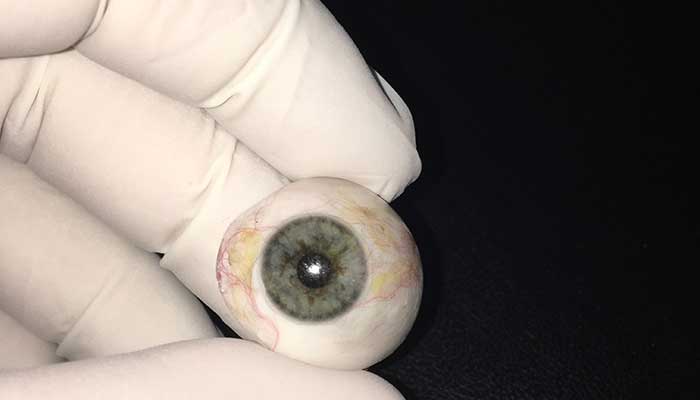
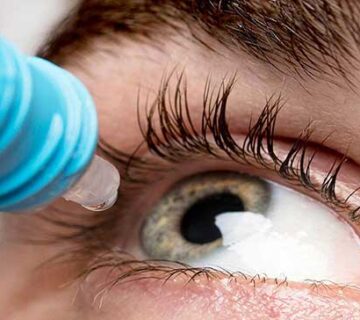
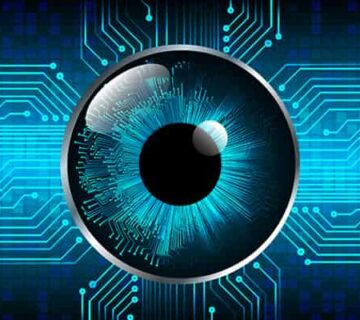
No comment